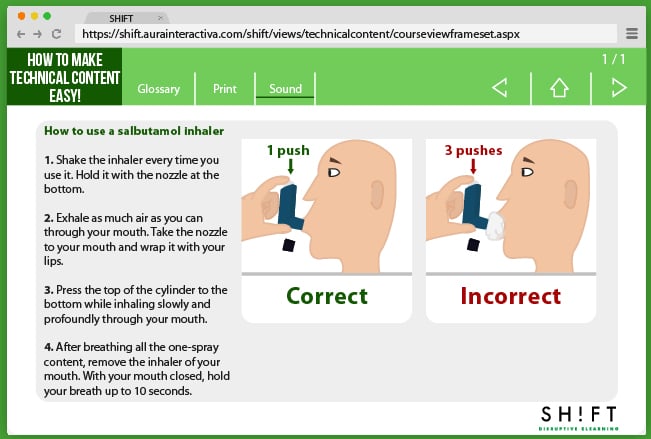Content experts, instructional designers and other eLearning professionals often have to communicate complex information which learners may find difficult to understand and apply in their jobs. Although they routinely have to do this, there is a common misconception that technical content is too boring and pedantic. However, it does not need to be so. In fact, when dull, technical content that is presented poorly, it can overwhelm, turn off, and intimidate learners, leaving them feeling frustrated.
To avoid the above, eLearning professionals must find ways to produce content that is useful, practical, and comprehensive in order to keep learners engaged and receptive. They must simplify, break down, and cut away the non-essentials. The key is to be relevant, organized and engaging.
This post will examine the best ways to present technical information in an engaging and instructive manner and will explore the various approaches used to simplify complex subject matter. It will look at how technology, visuals, and interactive design take complicated information and present it in a dynamic and understandable manner.
1. Simplify to Make Content Accesible
People will learn technical concepts much faster if the information is presented through common vocabulary rather than industry-specific language. So, use plain English, clear-cut wording and terminology to translate jargon into a language every learner can understand.
In addition, metaphors, similes, and analogies all help to explain a technical subject that may be hard to describe with the least amount of distortion. Find something ordinary in the world, that represents your message and people will grasp it quickly. What's more, comparisons and contrasts help to translate information clearly, enliven dull data, and help people discover that they knew more than they initially thought. Start with concepts people know and tell them how your content is different. Use contrast to make your point more clear.

2. Use Video and Animation
Videos and animation provide high consumption for low effort and are best utilized in a short, simple, and easy to understand series. Both are useful for displaying dynamic data, moving parts, chemical or physical reactions, and how to assemble a piece of equipment. The combination of visuals and words can help those learners who normally struggle with text-only content.
Animation can additionally demonstrate scientific concepts that would not work with video footage. Furthermore, animation is useful for gaining attention in eLearning courses, although it is important not to overuse this technique as the visuals can become distracting.

3. Provide Step-By-Step Demonstrations.
Simulation training is particularly useful for learning computer systems and software such as HR management systems, CRM for Sales, accounting software and financial software, and retail software programs. These types of eLearning courses mimic real systems enabling learners to practice and become familiar with the IT software.
“Simulations and visualization tools make it possible for students to bridge experience and abstraction helping to deepen understanding of ambiguous or challenging content.” (WBEC 2000)
There are a few different types of simulations used in eLearning courses:
- Demonstration — Learners watch a video that explains how to accomplish a task. Although this is a good way to introduce the basics, it lacks the interaction users need to gain a hands-on experience.
- Guided practice — The simulation guides users through the procedure. When used for software, the simulation mimics the actual system but includes text or audio to tell the learner what to do.
- Assessment — Assessment simulations are based around the same idea as guided practice with the difference that the user must rely on his or her own knowledge to navigate the procedure or system. In order to overcome confusion and to avoid users becoming stuck in the simulation if they follow the wrong path, the simulation should include feedback.

5. Add Infographics and Visual Summaries
Compared to lengthy verbal or textual content, visual summaries and infographics make learning much easier; for instance, education psychologist Richard Mayer discovered that visuals with a small amount of text are more effective than visuals with a large amount of text. Although photos and videos are both very useful, sometimes infographics and other forms of visual summaries are the only way to illustrate complex concepts as they allow the message to be transferred more concisely by:
- Providing context and perspective.
- Helping users see relationships within data.
- Displaying patterns that would otherwise be difficult to detect.
- Explaining how something works — such as the mechanics of intricate objects, making it easier to explain the function of each piece.

6. Explain More Clearly with Diagrams
Many learners struggle seeing how some concepts and ideas are related, therefore it is fundamental to use visual techniques that make these connections more explicit. Along with charts, graphs, and maps, diagrams are the most valuable visual tool for eLearning developers to successfully communicate the complex subject matter. They allow course creators to explain multifaceted information, illustrate dense concepts, and demonstrate almost any process. Additionally, well-organized diagrams make it easier for learners to retrieve information. Each diagram should explain just a single idea to reduce confusion and distraction.
Gliffy is a good tool (and free) for generating diagrams, floor plans, flowcharts, technical drawings, and other visual information.





